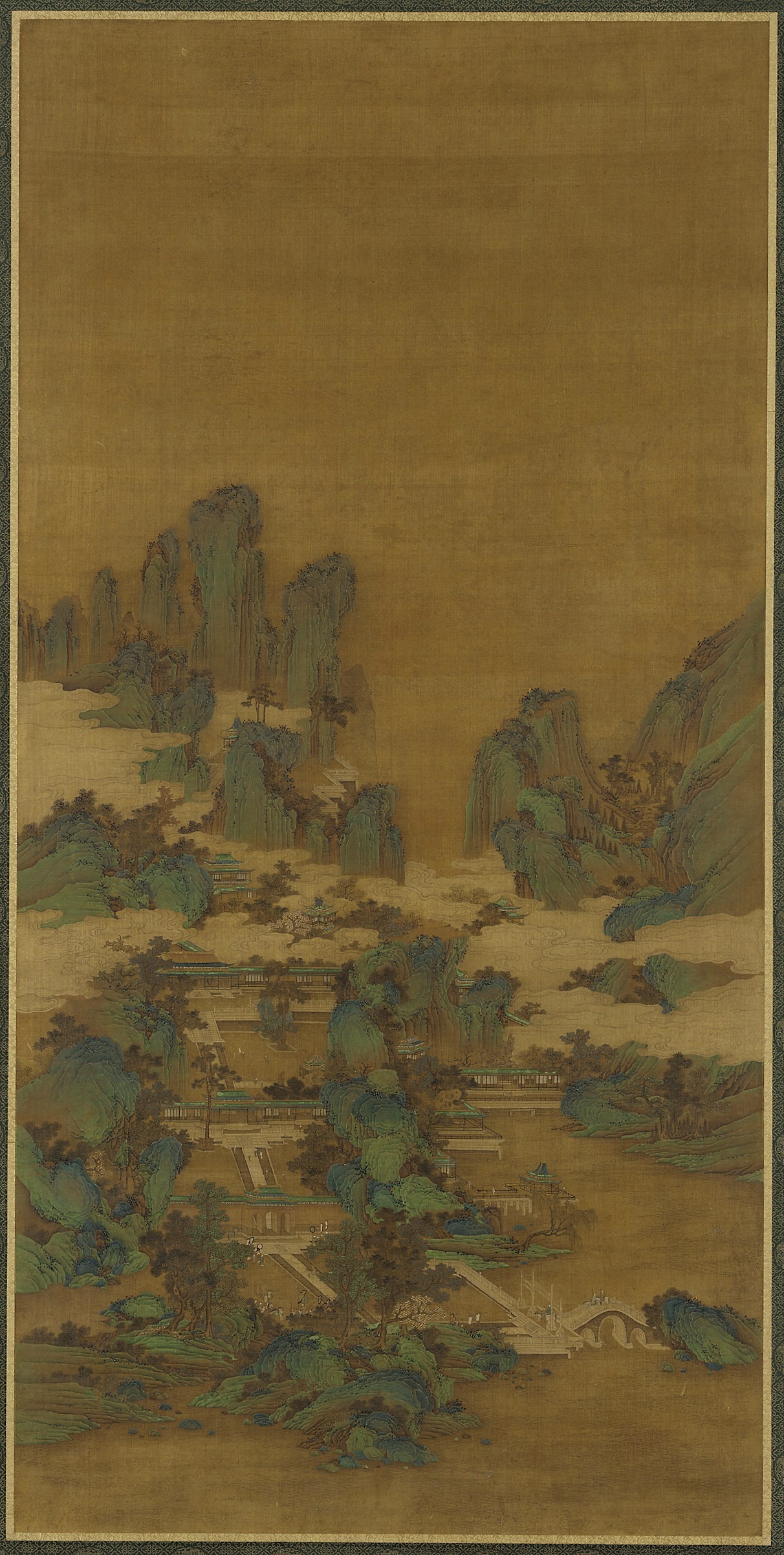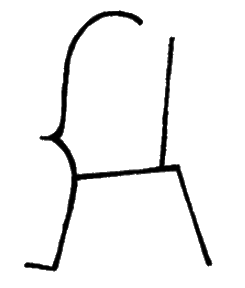|
Kürşat (hero)
Kürşat or Kürşad is a Turkish male name based on a historical character. He is the idealized character of a real person whose name was given as Ashina Jiesheshuai in the 7th-century Chinese chronicles. Jiesheshuai event Eastern Turkic Khaganate collapsed in 630 and most of Turkic tribal leaders accepted the suzerainty of Tang dynasty. Tang emperor Taizong tried to subjugate the Turkic tribes by offering posts to Turkic princes. Jiesheshuai of the Ashina house, was appointed as a general. However, in 639, he staged a coup to arrest the emperor. He was planning to get the freedom of Turks and to enthrone Holohu, his nephew as the khagan of Turks. However he couldn't succeed and was executed. Although the plot was unsuccessful, Taizong worried about the closeness of the Turkic tribes which were settled in the area south of Yellow River and changed the policy of Turkic settlement.Lev Nikolayeviç Gumilev: ''Eski Türkler'' (trans:D.Ahsen Batur) , p.281 Kürşat in literature In ... [...More Info...] [...Related Items...] OR: [Wikipedia] [Google] [Baidu] |
Turkish Language
Turkish ( , ), also referred to as Turkish of Turkey (''Türkiye Türkçesi''), is the most widely spoken of the Turkic languages, with around 80 to 90 million speakers. It is the national language of Turkey and Northern Cyprus. Significant smaller groups of Turkish speakers also exist in Iraq, Syria, Germany, Austria, Bulgaria, North Macedonia, Greece, the Caucasus, and other parts of Europe and Central Asia. Cyprus has requested the European Union to add Turkish as an official language, even though Turkey is not a member state. Turkish is the 13th most spoken language in the world. To the west, the influence of Ottoman Turkish—the variety of the Turkish language that was used as the administrative and literary language of the Ottoman Empire—spread as the Ottoman Empire expanded. In 1928, as one of Atatürk's Reforms in the early years of the Republic of Turkey, the Ottoman Turkish alphabet was replaced with a Latin alphabet. The distinctive characteristics of the Turk ... [...More Info...] [...Related Items...] OR: [Wikipedia] [Google] [Baidu] |
Ashina Jiesheshuai
Ashina Jiesheshuai (; ''New Book of Tang'' Vol. 2''Zizhi Tongjian'', vol. 195. ''Old Book of Tang'' Vol. 194-1 ''New Book of Tang'' Vol. 215-1 Middle Chinese ( Guangyun) pronunciation: ; died 19 May 639) was a member of the Ashina clan of the Eastern Turkic Khaganate and general (Zhonglangjiang) of the Tang dynasty. Background He was one of Shibi Khan's sons and the younger brother of Ashina Shibobi (), who was a vassal khagan of the Tang dynasty and used the title ''Tölis Khaghan''. ''Old Book of Tang'' Vol. 3 (). Tang China defeated the Eastern Turkic Khaganate, which became a vassal state in 630. During this period, some Turkic nobles were members of the Chinese army. Ashina Jiesheshuai was among these nobles. Jiucheng Palace raid By summer 639, Ashina Jiesheshuai had lost favor with Emperor Taizong (because he had falsely accused his brother Ashina Shibobi of treason, which Emperor Taizong found despicable). He formed a conspiracy with Ashina Shibobi's son Ashina Hexia ... [...More Info...] [...Related Items...] OR: [Wikipedia] [Google] [Baidu] |
Eastern Turkic Khaganate
The Eastern Turkic Khaganate () was a Turkic khaganate formed as a result of the internecine wars in the beginning of the 7th century (AD 581–603) after the First Turkic Khaganate (founded in the 6th century in the Mongolian Plateau by the Ashina clan) had splintered into two polities – one in the east and the other in the west. Finally, the Eastern Turkic Khaganate was defeated and absorbed by the Tang dynasty, and Xueyantuo occupied the territory of the former Turkic Khaganate. History Outline In 552-555 the Göktürks replaced the Rouran Khaganate as the dominant power on the Mongolian Plateau, forming the First Turkic Khaganate (552-630). They quickly spread west to the Caspian Sea. Between 581 and 603 the Western Turkic Khaganate in Central Asia separated from the Eastern Khaganate in the Mongolian Plateau. In the early period the Central Plain regimes were weak and paid tribute to the Turks at times. The Tang dynasty eventually overthrew the Eastern Turks ... [...More Info...] [...Related Items...] OR: [Wikipedia] [Google] [Baidu] |
Tang Dynasty
The Tang dynasty (, ; zh, t= ), or Tang Empire, was an Dynasties in Chinese history, imperial dynasty of China that ruled from 618 to 907 AD, with an Zhou dynasty (690–705), interregnum between 690 and 705. It was preceded by the Sui dynasty and followed by the Five Dynasties and Ten Kingdoms period. Historians generally regard the Tang as a high point in Chinese civilization, and a Golden age (metaphor), golden age of cosmopolitan culture. Tang territory, acquired through the military campaigns of its early rulers, rivaled that of the Han dynasty. The House of Li, Lǐ family () founded the dynasty, seizing power during the decline and collapse of the Sui Empire and inaugurating a period of progress and stability in the first half of the dynasty's rule. The dynasty was formally interrupted during 690–705 when Empress Wu Zetian seized the throne, proclaiming the Zhou dynasty (690–705), Wu Zhou dynasty and becoming the only legitimate Chinese empress regnant. The devast ... [...More Info...] [...Related Items...] OR: [Wikipedia] [Google] [Baidu] |
Emperor Taizong Of Tang
Emperor Taizong of Tang (28January 59810July 649), previously Prince of Qin, personal name Li Shimin, was the second emperor of the Tang dynasty of China, ruling from 626 to 649. He is traditionally regarded as a co-founder of the dynasty for his role in encouraging Li Yuan, his father, to rebel against the Sui dynasty at Jinyang in 617. Taizong subsequently played a pivotal role in defeating several of the dynasty's most dangerous opponents and solidifying its rule over China. Taizong is considered to be one of the greatest emperors in China's history and henceforth, his reign became regarded as the exemplary model against which all future emperors were measured. His era, the "Reign of Zhenguan ()" is considered a golden age in ancient Chinese history and was treated as required studying material for future crown princes. Taizong continued to develop imperial examination systems. He asked his officers to become loyal to the policies not people, in order to eliminate corru ... [...More Info...] [...Related Items...] OR: [Wikipedia] [Google] [Baidu] |
Ashina Tribe
The Ashina (; Middle Chinese: (Guangyun) ), were a Turkic speaking tribe and the ruling dynasty of the Göktürks. This clan rose to prominence in the mid-6th century when the leader, Bumin Qaghan, revolted against the Rouran Khaganate. The two main branches of the family, one descended from Bumin and the other from his brother Istämi, ruled over the eastern and western parts of the Göktürks, Göktürk confederation, respectively. Origin Primary Chinese sources ascribed different origins to the Ashina tribe. Ashina were first attested to 439, as reported by the ''Book of Sui'': on the 18th day of the 10th month, the Tuoba ruler Emperor Taiwu of Northern Wei overthrew Juqu Mujian of the Northern Liang in eastern Gansu,Wei Zheng et al., ''Book of Sui'', :zh:t:隋書/卷84, Vol. 84. and 500 Ashina families fled northwest to the Rouran Khaganate near Gaochang. According to the ''Book of Zhou'', ''History of the Northern Dynasties'', and New Book of Tang, the Ashina clan was a co ... [...More Info...] [...Related Items...] OR: [Wikipedia] [Google] [Baidu] |
Yellow River
The Yellow River or Huang He (Chinese: , Standard Beijing Mandarin, Mandarin: ''Huáng hé'' ) is the second-longest river in China, after the Yangtze River, and the List of rivers by length, sixth-longest river system in the world at the estimated length of . Originating in the Bayan Har Mountains in Qinghai province of Western China, it flows through nine provinces, and it empties into the Bohai Sea near the city of Dongying in Shandong province. The Yellow River basin has an east–west extent of about and a north–south extent of about . Its total drainage area is about . The Yellow River's basin was the Yellow River civilization, birthplace of ancient Chinese, and, by extension, Far East, Far Eastern civilization, and it was the most prosperous region in early Chinese history. There are frequent devastating natural disasters in China, floods and course changes produced by the continual elevation of the river bed, sometimes above the level of its surrounding farm fi ... [...More Info...] [...Related Items...] OR: [Wikipedia] [Google] [Baidu] |
Shad (prince)
Shad ( otk, 𐱁𐰑, šad) was a state office in the early Central Asian Turkic states, roughly equivalent to governor. "Shad" could only be an appointee over a vassal tribe, where he represented interests of the preeminent Kagan. The name of this tribe was included in his title. For example, Tardu-shad could only be a Shad over Tardu tribe. The title carried autonomy in different degrees, and its links with the central authority of kagan varied from economical and political subordination to superficial political deference. The title ''Shad'' is borrowed from an Iranian source (cf. Sogdian ''’ġšyδ'', Saka ''šao'', Middle Iranian ''šāδ'', Persian ''šāh'' < ''xšāyaθiya'' ‘king’, or Avestan ''xšaēta'' "chief"). The position of Shad was traditionally given to the member of a ruling ( |
Khagan
Khagan or Qaghan (Mongolian:; or ''Khagan''; otk, 𐰴𐰍𐰣 ), or , tr, Kağan or ; ug, قاغان, Qaghan, Mongolian Script: ; or ; fa, خاقان ''Khāqān'', alternatively spelled Kağan, Kagan, Khaghan, Kaghan, Khakan, Khakhan, Khaqan, Xagahn, Qaghan, Chagan, Қан, or Kha'an is a title of imperial rank in the Turkic, Mongolic and some other languages, equal to the status of emperor and someone who rules a khaganate (empire). The female equivalent is Khatun. It may also be translated as " Khan of Khans", equivalent to King of Kings. In Bulgarian, the title became known as ''Khan'', while in modern Turkic, the title became ''Khaan'' with the ''g'' sound becoming almost silent or non-existent; the ''ğ'' in modern Turkish ''Kağan'' is also silent. Since the division of the Mongol Empire, monarchs of the Yuan dynasty and the Northern Yuan held the title of ''Khagan''. ''Kağan, Hakan'' and ''Kaan'', Turkish equivalents of the title are common Turkish names ... [...More Info...] [...Related Items...] OR: [Wikipedia] [Google] [Baidu] |
Yabgu
Yabghu ( otk, 𐰖𐰉𐰍𐰆, yabγu,Entrabγu">"𐰖𐰉𐰍𐰆_[yabγuйабғұ"in_"Ethno-Cultural_Dictionary"_''Türik_Bitig''_),_also_rendered_as_Jabgu,_Djabgu_or_Yabgu,_was_a_state_office_in_the_early_Turkic_peoples.html" ;"title="abγuйабғұ".html" ;"title="abγu">"𐰖𐰉𐰍𐰆 [yabγuйабғұ"">abγu">"𐰖𐰉𐰍𐰆 [yabγuйабғұ"in "Ethno-Cultural Dictionary" ''Türik Bitig'' ), also rendered as Jabgu, Djabgu or Yabgu, was a state office in the early Turkic peoples">Turkic states, roughly equivalent to viceroy. The title carried autonomy in different degrees, and its links with the central authority of Khagan varied from economical and political subordination to superficial political deference. The title had also been borne by Turkic princes in the upper Oxus region in post- Hephthalite times. The position of Yabgu was traditionally given to the second highest member of a ruling clan (Ashina), with the first member being the Kagan himself. Frequently, ... [...More Info...] [...Related Items...] OR: [Wikipedia] [Google] [Baidu] |
Nihal Atsız
Hüseyin Nihâl Atsız ( ota, حسين نيهال آتسز; January 12, 1905 – December 11, 1975) was a prominent Turkish ultranationalist writer, novelist, and poet. Nihâl Atsız self-identified as a racist, Pan-Turkist and Turanist. He was a critic of Islam in his later life, defining it as “a religion created by the Arabs, for Arabs”.Cenk SaraçoğluNihal Atsız's World-View and Its Influences on the Shared Symbols, Rituals, Myths and Practices of the Ülkücü Movement/ref> He was the author of over 30 books and numerous articles and was in strong opposition to the government of İsmet İnönü, which he criticized for co-operating with the communists. He was accused of being a sympathizer of the Nazi government and plotting to overthrow the Turkish government. Personal life Nihâl Atsız was born on January 12, 1905, at Kasımpaşa, Istanbul. His father was navy commander Mehmet Nail Bey, from the Çiftçioğlu family of Torul, Gümüşhane; and his mother was Fat ... [...More Info...] [...Related Items...] OR: [Wikipedia] [Google] [Baidu] |
Sabahattin Ali
Sabahattin Ali (25 February 1907 – 2 April 1948) was a Turkish novelist, short-story writer, poet, and journalist. Early life He was born in 1907 in Eğridere township (now Ardino in southern Bulgaria) of the Sanjak of Gümülcine (now Komotini in northern Greece), in the Ottoman Empire. His father was an Ottoman officer, Selahattin Ali, and his mother Husniye. His father's family was from the Black Sea region. He lived in Istanbul, Çanakkale and Edremit before he entered the Teacher School in Balıkesir. His elementary and middle school education was interrupted by WWI, contributing to his difficult childhood. Then he was transferred from Balikesir to the School of Education in Istanbul, where he graduated in 1926 with a teacher's certificate. His various poems and short stories were published in the school’s student paper. After serving as a teacher in Yozgat for one year, he earned a fellowship from the Ministry of National Education and studied in Potsdam, Ger ... [...More Info...] [...Related Items...] OR: [Wikipedia] [Google] [Baidu] |









